Royal Anne Galley shipwreck mystery remains
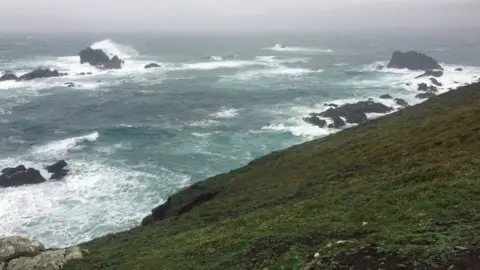 David Gibbins
David GibbinsThree hundred years ago, 200 people on board a navy ship drowned after the vessel sank in a storm off the most southerly point of mainland Britain.
The location of where the bodies were buried has remained a mystery.
The Royal Anne Galley, a warship symbolic of the "golden age of piracy," sank off Lizard Point, Cornwall, on 10 November, 1721.
The diver leading a renewed investigation of the wreck said its secrets "keep him awake at night".
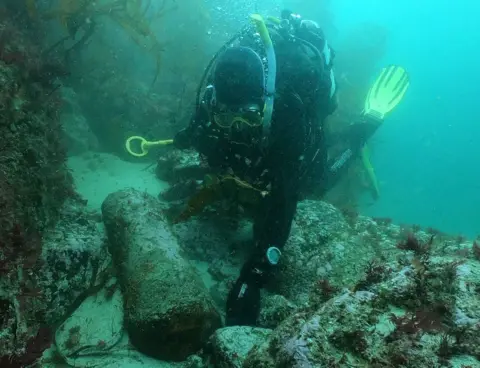 Ben Dunstan
Ben DunstanThe vessel was a sail and oar-powered military ship, on route from Spithead, Portsmouth, to the Caribbean, when it hit rocks a few hundred metres off Lizard Point.
Among many wealthy passengers on board was John, 3rd Lord Belhaven, who sat in the House of Lords as a Scottish Representative Peer and was taking up a new post as the governor of Barbados.
It was thought many of the bodies which washed up along the coast were buried in a valley near the wreckage site called Pistil Meadow.
However, an excavation in 2017 found no human remains.
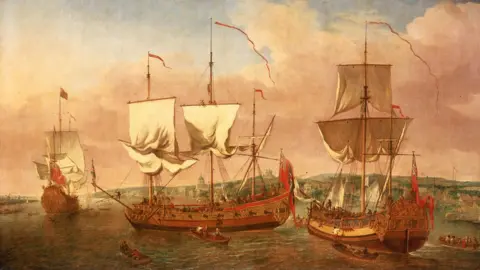 National Maritime Museum, London
National Maritime Museum, London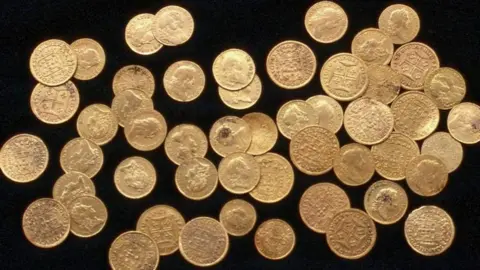 CISMAS / Kevin Camidge
CISMAS / Kevin Camidge"You're venturing into this moment in time of catastrophe and horror, of power and emotion," said archaeologist Dr David Gibbins.
His team of three hold the only current licences to dive the wreck - granted by Historic England to help safeguard it.
Mark Milburn and Ben Dunstan make up the trio of volunteer divers.
Dr Gibbins said they wanted to "reconstruct" what they could about the lives of the passengers in the "golden age of piracy" and planned further "intensive investigations" in 2022.
"We had three particularly good dives this year, it was incredibly exciting because we sort of rediscovered where the site was," he said.
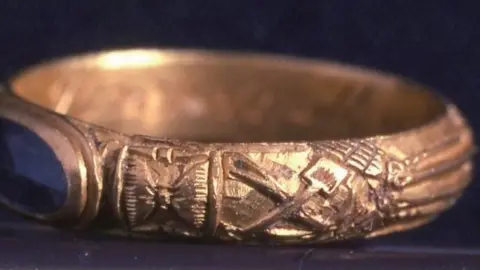 CISMAS / Kevin Camidge
CISMAS / Kevin CamidgeThe wreck site was first rediscovered in 1991 by local diver Robert Sherratt and became officially protected by law in 1993, meaning only licensed divers could access it.
Kevin Camidge held the diving licence for many years, followed by the current team five years ago.
About 400 artefacts were found in the 1990s and early 2000s, including cannons, guns, coins, jewellery and cutlery.
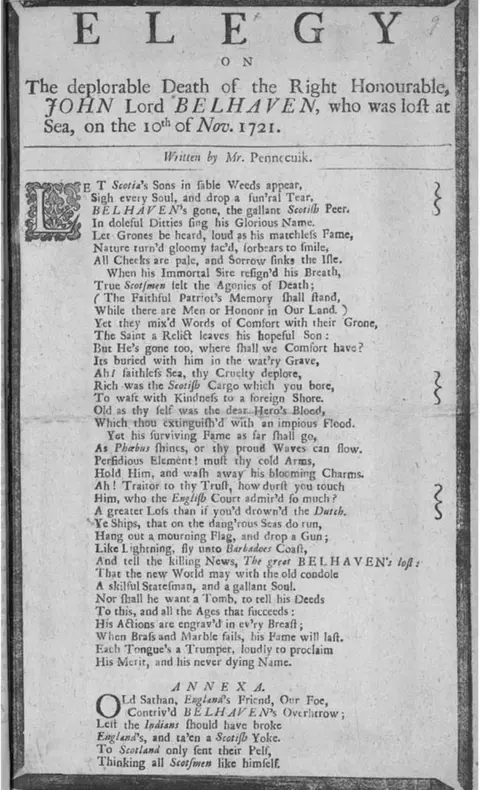 Scottish National Library
Scottish National LibraryDr Gibbins said: "There are still areas that have not been excavated or explored."
He said the site was so dangerous it could rarely be safely accessed - but that each season the weather and tides revealed more.
"It's a bit of an adrenaline fix - it's a bit addictive actually I think.
"It keeps you awake at night thinking 'when is the weather going to be right, what will be revealed?'
"It's like endless business year in and year out... A life-enhancing thing to do I think."
Although he said they did not expect to find more "treasure", he hoped they would find more items "that reveal more about the individuals on board... as well as anything that tells us more about the ship, her armament and her equipment".
After sailing to Barbados, the Royal Anne Galley was due to hunt pirates in the Leeward Isles, Jamaica, Carolina and Newfoundland.
Simon Stephens, curator at Royal Museums Greenwich, said the ship was just under 130ft (40m) in length with 40 guns and 66 oars, and it had a 22-year career.
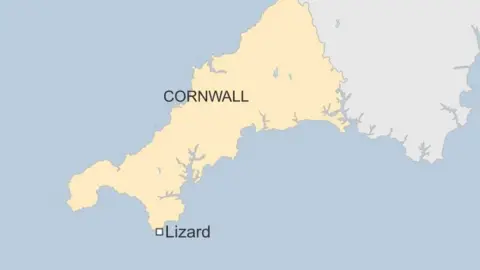
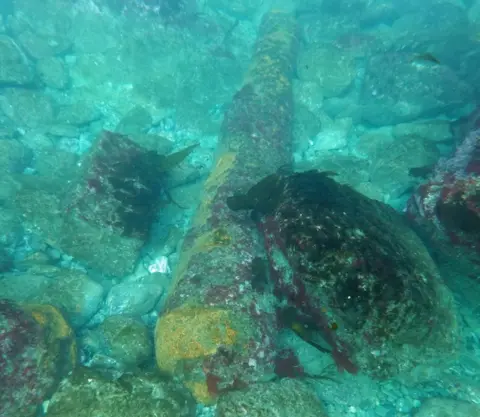 David Gibbins
David GibbinsCharles Johns, formerly senior archaeologist with Cornwall Council, has extensively researched the wreck, writing reports for Historic England in 2007 and 2016.
He said stories had been passed down through the generations, of many of the 200 bodies washing up and being buried at a site called Pistil Meadow.
"I grew up at the Lizard so I've always been familiar with the legend," he said.
"Everyone knew that Pistil Meadow was haunted, you wouldn't go there late at night, you know.
"There are stories of people passing this old man in a tricorn hat on the cliff path - my brother says he encountered this."
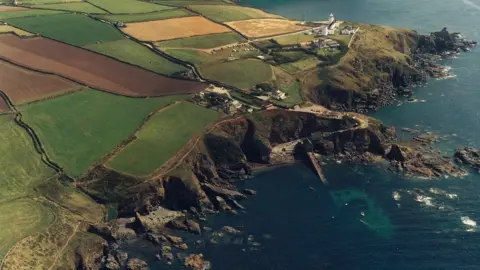 National Trust
National TrustA National Trust archaeologist said in 2015 that geophysical survey results "seemed to be showing a very large mass burial pit".
However, a subsequent excavation in conjunction with Bournemouth University and the Maritime Archaeological Sea Trust (MAST) in 2017 found no evidence of human remains on the land.
The report into findings said it was possible the bodies were on another part of the site, or more likely buried locally elsewhere.
It said: "A small potential exists for evidence of the burials to survive within this section, and as such is worth investigating further."
When asked if he believes the bodies are on the site Mr Johns responded: "I like to think they may be in areas not covered by the 2017 evaluation".

Follow BBC News South West on Twitter, Facebook and Instagram. Send your story ideas to [email protected].
